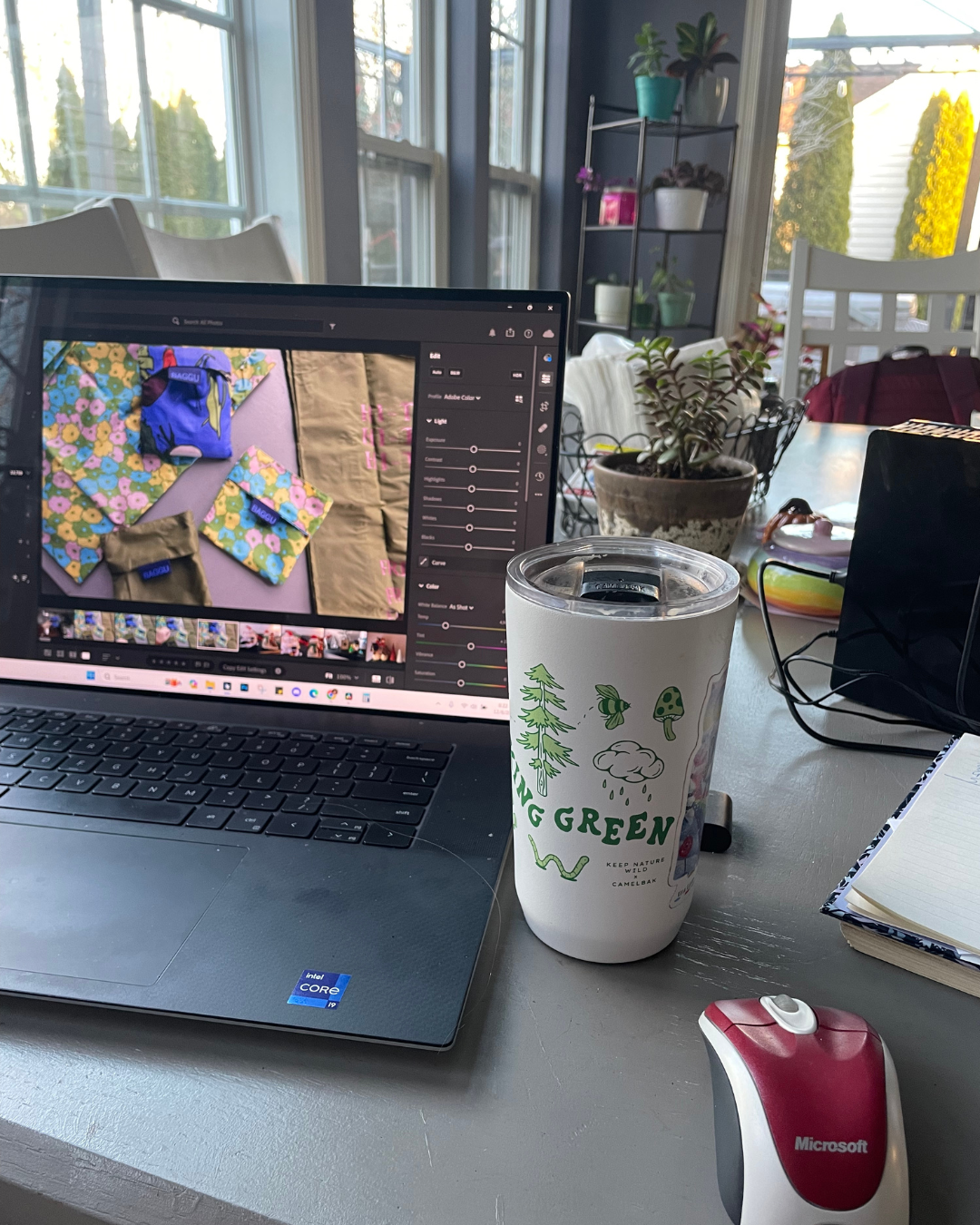THIS is How Much Money Zero Waste Living Can Save You (it’s over $1k per year)
I get it all the time: zero waste lifestyles are just so expensive! My entire platform is dedicated to proving that statement wrong: zero waste lives can be easy, free, and fun. So, let’s dive in today to 10 zero waste swaps that save you money and HOW much money these low waste swaps can save. Of course there is more where that came from so come back for future parts.
Coffee cup: savings - 10 cents to $1 per visit
Let’s say you go out for coffee twice a week and you save an average of 50 cents per time you bring your reusable coffee cup, that’s $1 per week or $52 per year!
Reusable bag: savings of around 10 cents per bag in most states
A lot of US states are starting to charge for plastic bags and this bag tax works! Not only will you save money by not using a disposable bag, but some stores (like Sprouts out west) actually give you 10 cents off per bag you use. Let’s say you grocery shop one a week and use 5 reusable bags per trip, that’s 50 cents per grocery trip or $26 per year.
Reusable water bottle
Bottled water can get expensive! I’m talking $6-20 per pack of 40 bottles. It may not seem like much once, but it adds up. Let’s say 1 person drinks 2 water bottles per day or 14 water bottles per week. A pack of 40 will last one person about 3 weeks. Let’s round it up to 1 pack per month for easy math. That means you need 1 pack per month, 12 packs a year which would cost $36-240 per year depending on the brand.
If you use a reusable water bottle and fill it at home, it’s basically free. Yes, you pay a water bill, but you certainly are not drinking $240 worth of water at home. Accounting for the price of an average water bottle at $30, let’s say you’d save $6-200 per year.
Turning off the lights during the day
Lighting accounts for 20% of the average person's electricity bill, but let’s strive to make that lower. That’s about $200 per year, at least when this article was written in 2016, surely it’s more by now. Let’s say it’s around $300 these days. Even if you reduce your lighting from 20% to 19%, that will save you $15 a year. Challenge yourself to reduce your lighting by 5% and you can save $75 a year simply by turning off the lights when not in use and taking advantage of daylight. Learn more about energy conservation in this video.
Image from Squarespace
Period underwear
They’re the most expensive zero-waste period swap but they will still save you so much money! On average, period underwear costs $20. The average cycle lasts 6 days and you need at least two pairs of period underwear, but I recommend three or more just for ease of use. I explain more in this video. So, let’s say you buy 3 pair, totaling $60.
For comparison, pads cost $8-10 for a pack of 42. The average person uses 20-30 pads per cycle. That’s $60-80 max a year on disposables.
So, period underwear will pay itself off after a year and then begin to save you money! They can last years if you take care of them properly. Learn more about period underwear care in this video.
Total savings for year one, you’d break even, but year two you can save up to $100!
Or a menstrual cup/disc
It’s similar for a menstrual cup or disc as well, but the savings are even bigger cause you need just one of them. The average cup or disc will probably also run about $20.
On the other hand, tampons are around $8-16 for a box of 36. The average person uses 20-30 tampons per cycle making the total for the year $80-150+ depending on the brand. That means a menstrual cup or disc will pay itself off in just 1-2 months and then start to save you money.
Total savings for 1 year would be around $130
Rags/reusable paper towels
The cheapest option here is to use what you already have: stained towels, old t-shirts, you name it. Use some old fabric as reusable towels and rags. Let’s say you do this, it’s free!
The average American uses 145 rolls of paper towels per year. The average cost per roll is $2-4 meaning a total cost of around $250-600 per year. And if you make or use rags you already have for free, that’s all savings, baby!
Reusable tissues
Another easy-to-make swap out of old t-shirts, you can do this swap for free.
The average person in 2020 used 2 boxes of tissues per month, but some people used up to 8! The cost is about $1.50-4 per box, depending on the brand. That means it would cost $3-8 per month or $36-96 per year. Once again, if you make reusables yourself, that’s all savings!
French press vs coffee with filter vs keurig
If you’re a coffee lover, a French Press or espresso machine are the way to go in terms of sustainability. French Press is a much cheaper option, so we will dive into that today. I bought a used French Press for $20 or you can buy a new one for an average of $40. Now, all you need to buy is the ground: no filter, no pods, nothing!
A box of K-Cups costs around $40 for a pack of 72 making that 5 packs a year if you only drink one cup of coffee per day. But, most people drink more than that and/or have multiple people drinking coffee in the household so let’s double that. 10 packs per year costs $400.
Let’s look at ground to keep things fair. On the cheap end, for something like Folgers, costs around $10 for 90 servings. You can already see how much money you can save with a French Press. 2 cups of coffee per day for 365 days would be $80. Plus the cost of a $20-40 French Press…
Cheap coffee would save you $280-300!
But, let’s say you want something a little higher end, a small brand. That might cost you $12-30 per 18 oz bag which is 72 servings. Still cheaper than a Keurig and so much less waste. That would be $120-300 per year, minus the $20-40 spent on the French Press…
You will still be saving $60-260 per year!
Of course, this prevents so much waste as well.
Image from Squarespace
Library card vs new books
An underrated zero-waste swap is a library card. How is that even zero waste? Well, borrowing prevents you from buying something new. It prevents everyone who uses the library from buying something new, preventing so many trees from being cut down, processed, shipped, and so forth. Library cards are totally free, too!
Let’s say you read 1 book per week or 52 books per year (audiobooks are reading, too!). If you borrow them all, that means you don’t have to spend money on 52 books. The average book costs $15. Of course, some are more, some are less. That means you can save $780 per year borrowing books.
If you still like to own books, I suggest Thriftbooks. They are usually 1/2 the price and just as eco-friendly as borrowing!
Image from Squarespace
Okay, it’s time for the grand total:
Reusable coffee cup: $52
Reusable grocery bags: $26
Reusable water bottle: $6-200
Reducing light usage by 5%: $75
Period underwear: $0 first year, $100 year 2
Menstrual cup/disc: $130
Rags: $250-600
Reusable tissues: $36-96
French Press: $60-300
Library card: $780
Drumroll please….$1415-2359!!!
That is CRAZY!! Keep in mind, this is just 10 swaps. There are so many more swaps and habits that can save you money and also prevent waste. I love posts like these to show that there is more incentive than just saving the planet as if that’s not important. Some people are selfish, I get it. If you want to live eco for selfish reasons, I see you! If you want to live zero waste for the planet and also love the selfish benefits, I see you too!
Let me know if you’d like me to make this a series, I would love to share more and it was so much fun to put together. Thank you for reading along, as always, remember that your small actions make a big difference in the long run :)
Emma











